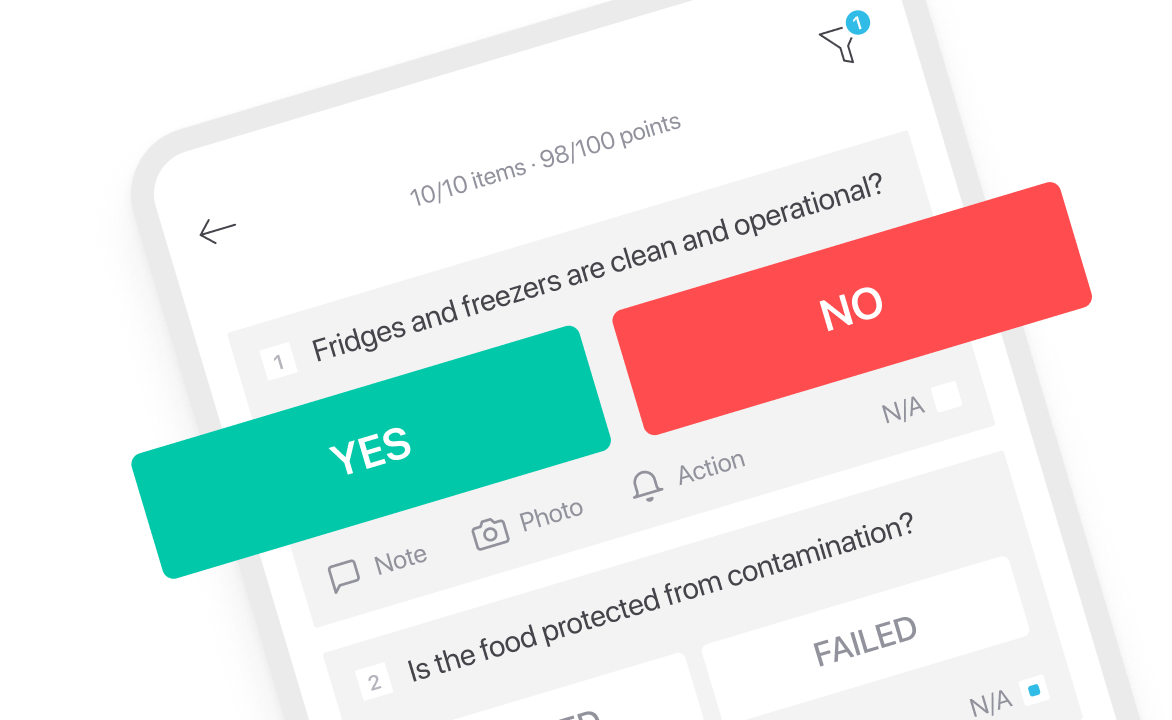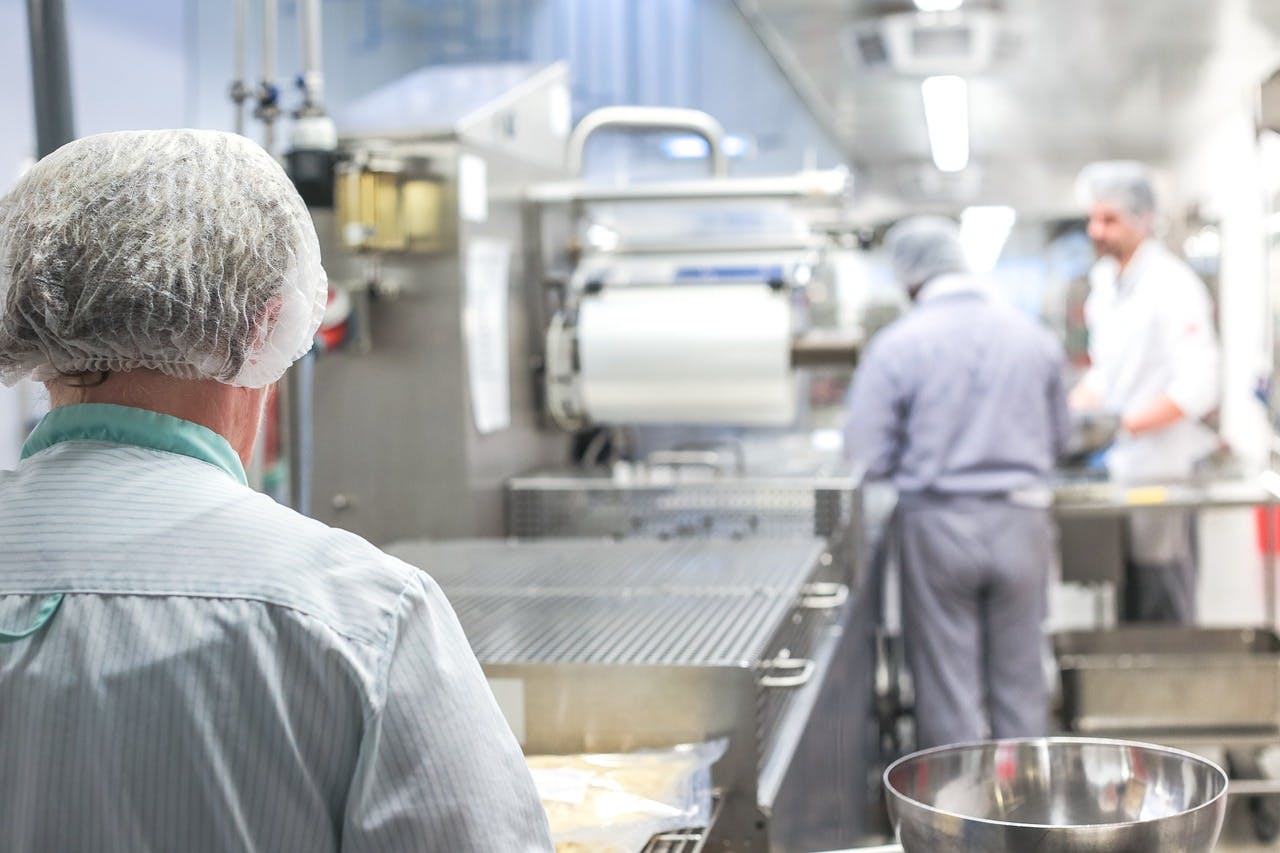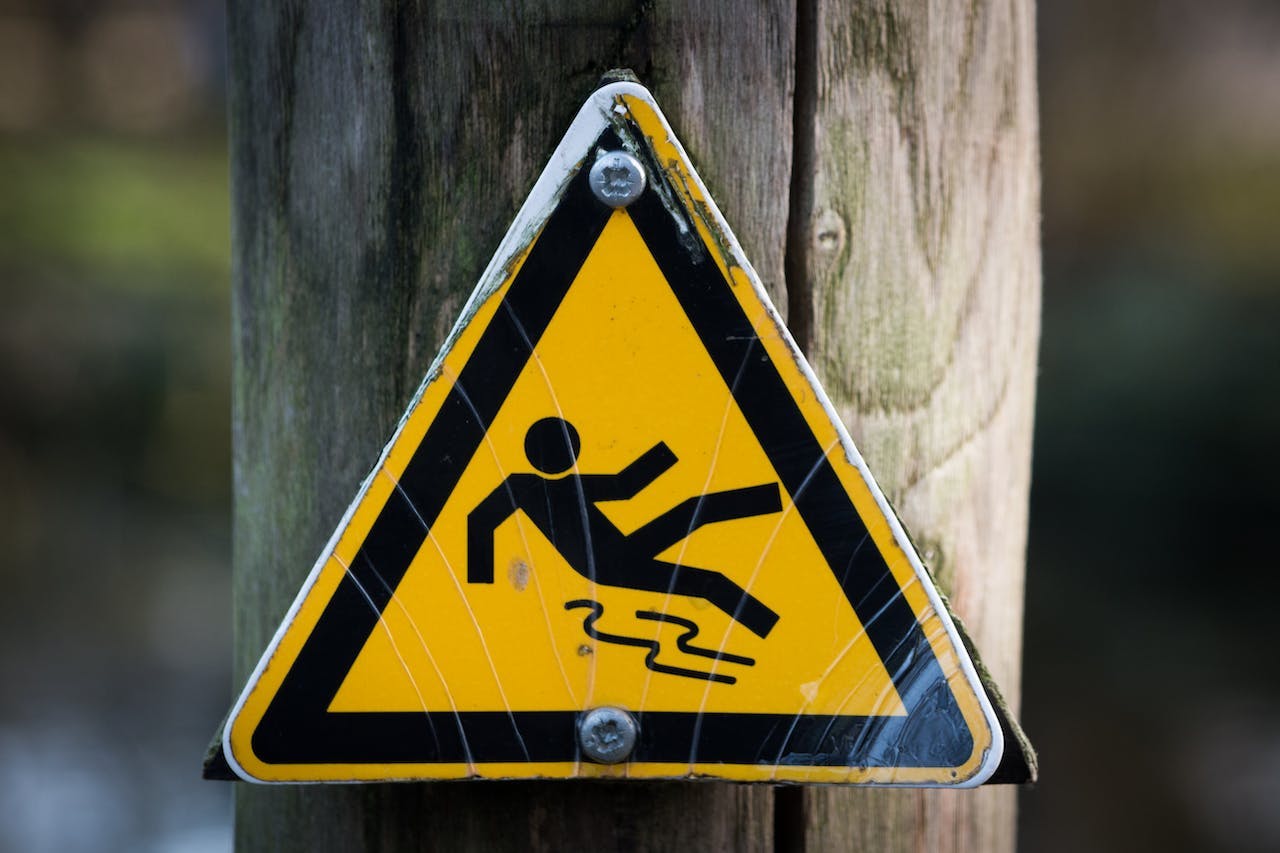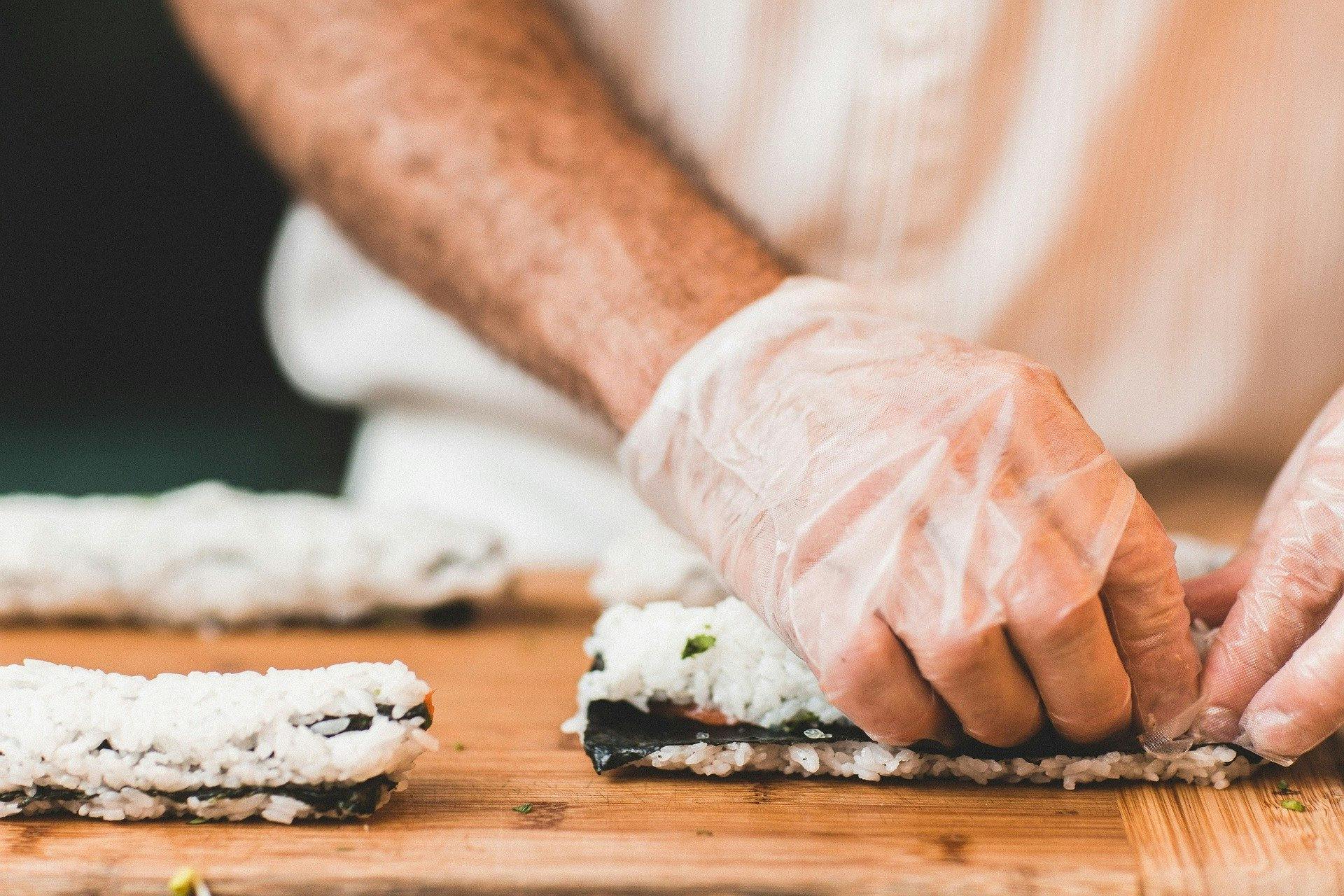An essential aspect of keeping healthy eating habits is ensuring food safety. Despite the food supply in the United States being among the safest in the world, food-related illnesses affect close to 50 million Americans annually. Most food safety guidelines are uncomplicated, but go a long way in improving our quality of life.
In every supply chain, food is handled multiple times at different points of its journey. This is why it is especially important to mitigate the potential effects of contaminants and help keep food safe for consumption.
Sticking to safe food handling practices and recommendations is a must for several reasons. Nutrition and food security are intertwined in many ways. Contaminated food can lead to illness and malnutrition, particularly in certain demographics such as the elderly, infants and children, and those with pre-existing conditions.
What does this mean for you? Standards for handling, cooking, and storing food are crucial to preventing foodborne health issues but are often taken for granted. This happens mainly because harmful bacteria are easily transmitted and can’t be detected most of the time. This article takes a look at some of the most important steps to ensuring food safety, relying on recommendations from the FDA, USDA, WHO, and others. It will help you ensure customer safety at all times.
- Where to Start: The USDA Food Safety Guidelines
- Risky Eating Behaviors
- Specific Populations at Increased Risk of Foodborne Illness
- Additional things to keep in mind
- How to know your customers have eaten contaminated food.
- Microbes aren’t the only culprit in food-related issues.
- More than 200 diseases are spread as a result of mishandling food.
- Bacteria can evolve and become resistant to treatments.
- Food safety is a shared responsibility.
- Ensuring food safety comes down to continuity
Where to Start: The USDA Food Safety Guidelines
In 2017, the United States Department of Agriculture (USDA), the FDA, and the Department of Health and Human Services spearheaded a national initiative to help prevent food-related illnesses across the country. Together, they came up with the Food Safe Families campaign, which outlines the most basic principles of reducing the risks of food contamination. Here’s an overview of them.
You can also print out this free food safety inspection checklist that was based on USDA Food Safety Basics guidelines:
Keep foods safe!
Download this checklist based on USDA Food Safety Basics guidelines to prevent foodborne illness.

Cleaning
Harmful bacteria and viruses can easily spread across foods, surfaces, utensils, grocery bags, and anything you come in contact with. The worst part? It takes a blink of an eye for microbes to contaminate an area and transfer over to your body and multiply. This is why the cornerstone of every food safety guide is based on proper cleaning practices at regular intervals.
Handwashing
The benefits of handwashing are twofold: they prevent food from getting contaminated from raw animal products and they prevent microbes that live on people transfer onto the food. Everyone should wash hands before and after preparing food, and this is especially important when handling meat, poultry, eggs, and seafood.
Hands should be washed using soap and water. There is no need to rely on products that contain antimicrobial agents, though. They can sometimes negatively affect the skin, and microbes can gradually develop a resistance to them.

Countertops and Surfaces
On top of hand washing, you need to make sure to clean the surfaces you use for food preparation frequently and prevent cross-contamination. This is particularly important for raw produce.
The most effective way to wash surfaces is with hot water and soap. If there’s a need to sanitize an area, you can dilute a tablespoon of chlorine in a gallon of water and apply the solution where needed.
All kitchen surfaces and objects require regular cleaning. Special attention should be given to areas that are out of sight, including the insides of appliances. You should also remember to throw out any refrigerated leftovers that have been kept for more than four days.
Raw meat ingredients should be discarded after just one or two days if not used. All vegetables and fruits should be thoroughly rinsed, with the exception of pre-packaged items that have been labeled as ready-to-eat. Raw meat and seafood should never be rinsed.
Separating
In order to prevent contamination and illness, separating food which is ready for consumption from raw ingredients is key. This should be done at each step of food handling and preparation.
During the ingredient procurement process, food such as raw meat, poultry, or seafood should be placed in plastic bags and separated from other foods. Such food should also be placed below ready-to-eat ingredients when refrigerated. Reusable grocery bags should be cleaned regularly.
During preparation, always make sure to have separate cutting boards for fresh produce and raw meat, seafood, and poultry. Additionally, you should make sure never to return cooked food to a surface previously used for preparing raw food.
Cooking and Chilling
To ensure all harmful microbes are destroyed during food processing, food needs to be cooked to the recommended minimum internal temperatures. Gauging whether or not a piece of food is ready to eat by how it looks is not always easy. You can take a look at some of the recommended temperatures for cooking various ingredients here.
If possible, use a food thermometer to check the temperature of the food you’re preparing. It goes without saying that food thermometers should be cleaned before and after use as well. If you are using a microwave to prepare food, make sure everything is processed evenly, as cold spots could provide a breeding ground for bacteria.

In terms of the temperatures you need to be aware of, here are some recommendations. Hold cold foods at 40°F or below and hot foods at 140°F and above. If you leave food in the so-called ‘danger zone’ (40-140°F) for more than 2 hours, it is not suitable for consumption. This time period is cut in half for temperatures above 90°F, and food needs to be discarded after it runs out.
When frozen food begins to thaw at temperatures over 40°F, the chances of any present bacteria multiplying increases. There are three ways to thaw food safely: in the refrigerator, placing it in cold water and changing it every half an hour, and in the microwave.
Your refrigerator temperature should always be at 40°F or below, whereas your freezer should be at 0°F or below. When serving food for longer periods of time, keep it hot using appliances such as slow cookers or warming trays. Food that needs to be kept cold can be preserved using ice.
In terms of refreezing, you need to be aware of a few things. Meat and poultry products defrosted in the refrigerator can be refrozen prior to or after cooking without any adverse effects. If you thawed food using any other method, cooking it before refreezing is a good idea.
Risky Eating Behaviors
Some of these recommendations may come as no brainers, but it is important to keep aware of dangerous eating habits and behaviors. As mentioned, microbes such as bacteria, viruses, and parasites do not alter the look or smell of food in most cases.
Consuming any raw or undercooked animal food products significantly increases your chances of contracting food poisoning or falling ill. Some commonly eaten or raw foods in the United States include ground beef, seafood, dairy, seafood, eggs, and others.
Undercooked hamburgers, eggs with runny yolks, cheese produced using unpasteurized milk, or raw oysters can all lead to more than just a bad day. Not cooking foods to their recommended safe minimum internal temperatures and using unpasteurized dairy products should be avoided at all costs.
Dishes and drinks which include eggs as ingredients should be prepared with pasteurized eggs only. Think eggnogs, hollandaise sauce, cookie dough, ice cream, etc. If you decide to consume raw seafood, make sure to choose products that had previously been frozen.
Specific Populations at Increased Risk of Foodborne Illness
Certain demographics are more susceptible to foodborne illness. Pregnant women and their unborn children, infants, young children, the elderly, and individuals with weakened immune systems are all at increased risk.
People who have undergone cancer treatment or an organ transplant, as well as those recovering from liver diseases should also be wary of food-related issues. A couple of common foodborne illnesses include salmonellosis and listeriosis.

For these risk groups, contracting an illness as a result of food contamination can have serious or fatal consequences. If possible, pregnant women, children and the elderly should avoid raw seafood and undercooked meat, poultry, and unpasteurized milk.
Products such as soft cheeses should be consumed only after confirming they were made using pasteurized milk. When reheating dishes, high temperatures are essential to killing harmful bacteria.
Additional things to keep in mind
Following the previously listed principles sounds easy enough, but food safety often gets overlooked. Turns out, the sheer number of repetitive steps involved in ensuring it is difficult to track, especially in restaurants. Here is some food safety-related information worth keeping in mind at all times.
How to know your customers have eaten contaminated food.
If you think there’s a chance your customers have consumed contaminated food, make sure to provide help and call for immediate medical assistance if necessary. Even though harmful foodborne microbes take between one and three days to cause an illness, nausea and other symptoms can ensue in less than half an hour after eating.
The symptoms of food poisoning include feeling sick, vomiting, abdominal pain, diarrhea, as well as flu-like symptoms such as headaches, fever, or other body aches. The faster you can provide help, the better.
Microbes aren’t the only culprit in food-related issues.
Food supply chains are becoming increasingly complex and can expose people to harmful agents and factors such as cleaning chemicals, metals, pollutants, natural toxins, pesticides, additives, and others.
This is where measures such as washing or peeling go a long way. Simply rinsing or peeling most of your products can reduce the adverse effects of chemicals present on their surface. Combining washing with appropriate storage can also help reduce the chance of natural toxins building up.
More than 200 diseases are spread as a result of mishandling food.
According to the WHO, contaminated food is associated with 420.000 worldwide deaths annually. This estimate is based on sparsely available data and is likely a significant underestimation of the real numbers. It gets worse: almost a third of all foodborne deaths are children aged five or less.
Additionally, contaminated food can also lead to long-term health issues, with cancer and neurological disorders among the most serious ones.
Bacteria can evolve and become resistant to treatments.
A very concerning recent trend is seeing microbes increase their tolerance to antimicrobial agents applied in the agricultural industry. Misuse or overuse of certain treatments can have a devastating counter-effect, leading harmful bacteria to survive even the longest cross-continent journeys.
The sheer scale of the COVID-19 crisis has shown just how easy it is for a global pandemic to break out if we don’t retain control over food safety.
Food safety is a shared responsibility.
Achieving food safety requires planning both on an individual and systemic level. Manufacturers, food processing organizations, food transporters, distributors, and consumers all need to be aware of their role in the big picture. Reducing the risks associated with requires a collective, active effort.
Ensuring food safety comes down to continuity
As our food comes from large supply chains which sometimes span over multiple continents, opportunities for contamination are plenty. However, following the Food Safe Families principles and properly cleaning, separating, cooking, and chilling your food will minimize the dangers of contracting foodborne illness.
These processes are simple, yet occasionally tedious and repetitive, which is why it’s worth reminding yourself of the risks of not following them. Harmful parasites, pollutants, and toxins can cause long-term health issues, especially for those with weakened immune systems.
Ensuring food safety requires active participation. Manufacturers, distributors and consumers all have a role to play in mitigating the dangers of food contamination. By adhering to the USDA and FDA food safety guidelines, you’ll improve your own quality of life and protect those around you.
But here’s the best part: if you’re unsure where to start, download this free food safety inspection checklist:
Keep foods safe!
Download this checklist based on USDA Food Safety Basics guidelines to prevent foodborne illness.

last modified:09.27.24
Recent Posts

Top 5 Food Processing Industry Trends That Matter in 2025

Keeping Up With Compliance Trends 2025

OSHA Ladder Safety 101: How to Meet OSHA Standards and Keep Your Workers Safe

Car Wash Safety: Regulations & Best Practices You Need to Know

Fall Hazards At Work: How To Keep Your Employees Safe

The High Price of Neglect: OSHA Violations and Penalties

Expert Advice on Preventing Workplace Electrical Hazards

Slips, Trips and Falls in the Workplace: Best Practices

HSEQ Audit: The Complete Guide

Improve Safety: Inspection Management Software Benefits
